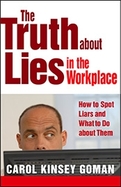BK Blog Post
The 10 Awful Truths about Book Publishing
 Posted by
Steve Piersanti,
Founder & Senior Editor,
Berrett-Koehler Publishers Inc.
Posted by
Steve Piersanti,
Founder & Senior Editor,
Berrett-Koehler Publishers Inc.
Steven Piersanti is founder of and senior editor at Berrett-Koehler Publishers, Inc., a leading independent publisher of progressive books on current affairs, personal growth, and business and management.
Steven Piersanti, Senior Editor, Berrett-Koehler Publishers
Updated June 24, 2020
1. The number of books being published every year has exploded.
According to the latest ProQuest Bowker Report (October 15, 2019), nearly 1.7 million books were self-published in the U.S. in 2018, which is an incredible 264% increase in just five years. By 2019, the total number of books published in the U.S. exceeded 4 million in that year alone—including both self-published books and commercially published books of all types—according to data provided to me by ProQuest. This is 10 times more titles being published annually in the U.S. than Bowker figures show were published in 2007, when book sales peaked. At the same time, more than 20 million previously published books are still available through many sources. Unfortunately, the marketplace is not able to absorb all these books and is hugely oversaturated.
2. Book sales are stagnant, despite the explosion of books published.
U.S. publishing industry sales peaked in 2007 and have either fallen or been flat in subsequent years, according to reports of the Book Industry Study Group and Association of American Publishers (AAP). Similarly, U.S. bookstore sales have declined 42% from their peak in 2007, according to the U.S. Census Bureau (Statista.com, April 15, 2020).
3. Despite the addition of e-book sales and downloadable audio sales, overall book sales have shrunk. After skyrocketing from 2008 to 2012, e-book sales leveled off in 2013 and have fallen since then. E-book sales fell from 28% of trade sales in 2013 to 17% of trade sales in 2019 (U.S. Books Performance Review of the NPD Group, January 22, 2020.) Downloadable audio sales have been the fastest-growing area of publishing over the past four years but still represent only 10% of publishing revenues (Publishers Weekly, March 16, 2020). Even adding in e-book sales and audio sales, the total book publishing pie has shrunk since its peak in 2007—yet every year it is divided among millions more titles because of the explosion of new titles and because most titles ever published are still available for sale.
4. Average book sales are shockingly small—and falling fast.
Combine the explosion of books published with the declining total sales and you get shrinking sales of each new title. According to BookScan—which tracks most bookstore, online, and other retail print sales of books (including Amazon.com)—only 690 million print books were sold in 2019 in the U.S. in all publishing categories combined, both fiction and nonfiction (Publishers Weekly, January 13, 2020). The average U.S. book is now selling less than 200 copies per year and less than 1,000 copies over its lifetime.
5. A book has far less than a 1% chance of being stocked in an average bookstore.
For every available bookstore shelf space, there are 100 to 1,000 or more titles competing for that shelf space. For example, the number of business titles stocked ranges from less than 100 (smaller bookstores) to up to 1,500 (superstores). Yet there are several hundred thousand business books in print that are fighting for that limited shelf space.
6. It is getting harder and harder every year to sell new titles.
Many book categories have become entirely saturated, with a surplus of books on every topic. It is increasingly difficult to make any book stand out. Each title is competing with millions of other titles available for sale, while other media are claiming more and more of people’s time. In a crowded marketplace, brand name authors and books stand out, and an increasing portion of the limited sales are going to mega-bestsellers (Publishers Weekly, November 4, 2019). At the same time backlist titles are accounting for an ever-greater share of publishing revenues (U.S. Books Performance Review of the NPD Group, January 22, 2020.) Result: investing the same amount today to market a new book as was invested a few years ago will yield a far smaller sales return today.
7. Most books today are selling only to the authors’ and publishers’ communities.
Everyone in the potential audiences for a book already knows of hundreds of interesting and useful books to read but has little time to read any. Therefore people are reading only books that their communities make important or even mandatory to read. There is no general audience for most nonfiction books, and chasing after such a mirage is usually far less effective than connecting with one’s communities.
8. Most book marketing today is done by authors, not by publishers.
Publishers have managed to stay afloat in this worsening marketplace only by shifting more and more marketing responsibility to authors—to cut costs and prop up sales. In recognition of this reality, most book proposals from experienced authors now have an extensive (usually many pages) section on the authors’ marketing platform and what the authors will do to publicize and market the books. Publishers still fulfill important roles in helping craft books to succeed and making books available in sales channels, but whether the books move in those channels depends primarily on the authors.
9. No other industry has so many new product introductions.
Every new book is a new product, needing to be acquired, developed, reworked, designed, produced, named, manufactured, packaged, priced, introduced, marketed, warehoused, and sold. Yet the average new book generates only $50,000 to $100,000 in sales, which needs to cover all of these new product introduction expenses, leaving only small amounts available for each area of expense. This more than anything limits how much publishers can invest in any one new book and in its marketing campaign.
10. The book publishing world is in a never-ending state of change.
The thin margins in the industry, high complexities of the business, intense competition, churning of new technologies, and rapid growth of other media lead to constant turmoil in bookselling and publishing, including the closure and sale of many publishing companies and publication programs each year. Translation: expect even more changes and challenges in coming months and years.
STRATEGIES FOR RESPONDING TO “THE 10 AWFUL TRUTHS”
1. The game is now pass-along sales.
2. Events/immersion experiences replace traditional publicity in moving the needle.
3. Leverage the authors’ and publishers’ communities.
4. In a crowded market, brands stand out.
5. Master new digital channels for sales, marketing, and community building.
6. Build books around a compelling, simple message.
7. Front-load the main ideas in books and keep books short.






